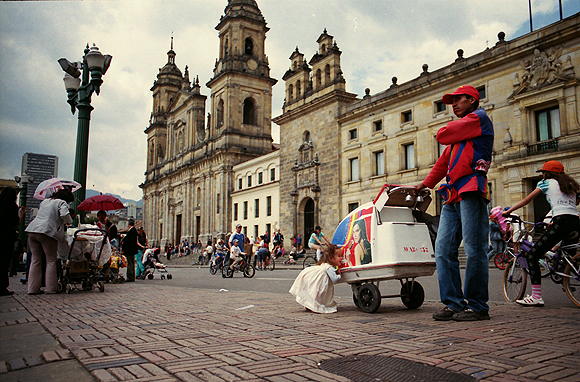“You must try pizza while in Napoli,” explained Karla, the straight-talking woman working the morning shift at the hostel. My mother and I had just arrived to Naples by train as part of our Grand Tour of Europe.
Karla knows that I'm American. She can tell from my accent and because she's holding our passports. Karla makes it clear that Americans don’t know anything about real pizza.
“Italians don’t eat pizza like Americans – with chicken and shit like that,” she said. I told you she was a straight talker.
“I want to learn how to make pizza,” I said to her, explaining how I like to walk a day in the life of a local, what I call an "internship." In Panama, I interned at the Chinito store and volunteered as a Machetero, a farm hand who uses a machete. Now in Naples, it makes sense that I'd learn the art of pizza making in the place that invented the food during the 16th century.
Besides, my résumé looks pretty solid for a single day internship. During high school, I was a punctual delivery driver and an unenthusiastic pan scrubber at Papa John's.
But Karla disagrees.
“Pizzerias are too busy for a tourist to make-a la pizza,” Karla says. “They tell you to fuck-off or something like this.”
While Karla continues explaining to me that I have zero chance of success, her co-worker chimes in.
“Do you speak Italiano?” Marco asks.
“Buonasera…” I reply. “Good evening…”
Marco leans towards me. He is waiting for me to roll off a few more words in Italian. When there are none, he shakes his head with disappointment.
“Internship is what you call it?” he asks rhetorically. “Yeah, impossible. No way. They will tell you to fuck-off or something like this.”
Internally, I disagree. My internship idea can be done! I give them a thumbs up and flash a smile as I walk away. There is nothing more motivating than listening to naysayers.
My self confidence is short-lived. All the pizzerias that I’ve targeted have customers waiting around the corner. These pizzerias operate more like factories than restaurants. My mother and I take a number and wait to be seated. Customers mill around outside the store waiting in anticipation for their number to be called. It’s like holding a Golden Ticket awaiting entrance to Willy Wonka’s chocolate factory.
After a long wait, our number is called. We squeeze in shoulder-to-shoulder at a communal table. Our order is taken quickly and without any small talk. Minutes later, two unsliced pizzas with a diameter slightly less than a hula-hoop are plopped on the table.
Customers at these high-speed pizzerias are encouraged to eat quickly and leave. The table space is needed to rotate in the next round of never-ending customers. Everyone wants to eat the good stuff. There is little time to ask questions. Going to the bathroom is frowned upon. Discussing the possibility of my internship in this hectic environment is impossible.
My mother and I wander around Naples’ city center. Fortunately, I’m able to catch Pizzeria de Mateo during a down time. Standing at the front ordering station is an Italian man with an amazing beer belly. The red tomato stains on his white tee-shirt match the color of the bandana hanging off the back of his neck. A few steps behind him, I see 10 other Italian men furiously preparing for the next wave of customers.
“I.Want. To. Work. At. A. Pizzeria. In. Napoli,” I say slowly and clearly. Hopefully, this will help me be better understood.
“You want-a pizza?” the man with the amazing beer belly asks.
“Yes, I want the pizza. But I want to work for it.”
“No-a understand.”
“Me gustaria trabajar aquí por un día. No me pagas.” I say to him in Spanish. “I want to work here for one day. You don’t have to pay me.”
I find speaking Spanish in Italy often communicates better than speaking English. Spanish and Italian are very similar. Unfortunately, this time it’s not the case. The man with tomato stains looks utterly confused. My efforts are pointless. I need a new plan.
Twenty-four-hours after flashing Karla an over-confident smile, I return with another look on my face. The smile has been replaced with an expression of helplessness. It’s the same expression that a toddler flashes to its mother when it needs or wants something.
“You were right,” I say to her. “I need your help. Could you call and help explain my internship idea?”
Karla agrees to go the extra mile for me. First, I’m her guest. Secondly, she admires the fact that I’m taking my mother on a tour of Europe. She picks up the phone and dials the pizzeria on my behalf.
“They said ok,” she tells me. “Come at 10 a.m. They start to make-a the pizza then. When it gets busy, they tell you to fuck-off.”
Brilliant.


















